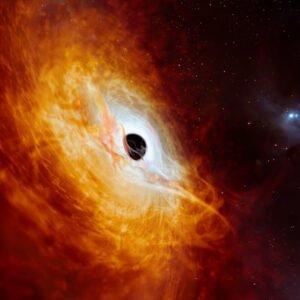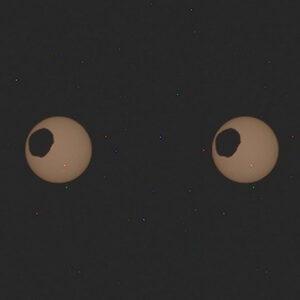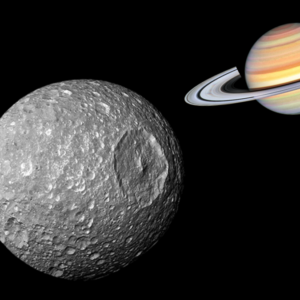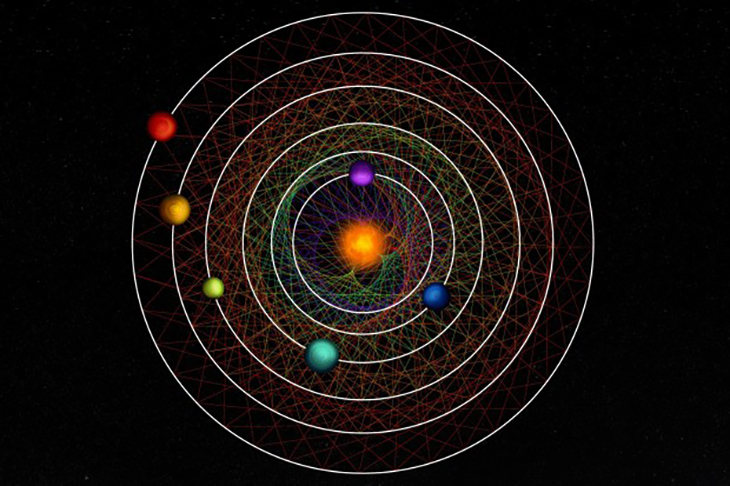
Scientists have made a remarkable discovery involving six exoplanets engaged in an extraordinary synchronized dance around the star HD 110067, situated in the Coma Berenices constellation approximately 100 light-years away from Earth. The unique aspect of this celestial performance lies in the perfect resonance of the exoplanets’ orbits, a phenomenon typically associated with the early stages of star-and-planet system formation. The synchronized orbits suggest that the eons-long ‘waltz’ of these exoplanets has remained undisturbed since their formation.
Initial observations conducted by NASA’s Transiting Exoplanet Survey Satellite (TESS) in 2020 and 2022 identified recurrent dips in the brightness of the star at regular intervals. Subsequent investigations, complemented by data from the European Space Agency’s ‘Characterizing Exoplanets Satellite’ (CHEOPS), unveiled the presence of six planets passing in front of the star, marking a significant celestial find.
What sets these exoplanets apart is not merely their existence but the intricacies of their orbital dynamics. Follow-up research by a team of European astronomers has illuminated the fascinating choreography of this planetary system. For every three complete orbits that the innermost planet executes, the next planet outward completes two orbits. This dance, reminiscent of a cosmic ballet, reflects the intricate interplay of gravitational forces among the celestial bodies.
The observed resonance is consistent with the theoretical framework of star-system formation. In the early stages of a star-and-planet system, evolving planets exchange torque with protoplanetary disks and migrate towards their central star. As these planets commence their migration, their gravitational influence on each other intensifies, leading to a delicate equilibrium that is further compounded by the gravitational pull exerted by the central star. The result is a celestial spectacle, where six exoplanets move in harmony, providing scientists with a unique opportunity to deepen their understanding of planetary system dynamics.
“Here we have 3 to 2, 3 to 2, 3 to 2, and 4 to 3, 4 to 3 I think, if I remember correctly, and this is all connecting all the planets in a resonance configuration, and by chance it happened that the inner planet made 6 orbits while the outer planet makes 1,” said Adrien Leleu, from the University of Geneva, Switzerland, and the co-author on the paper that described the sextuplets.
“Once the disks are no more, you can break the resonance by some star passing by, or another massive planet, or any kind of instability that can arise. So you can break resonance during the years of evolution but you cannot easily form them, I mean we don’t know of any mechanism that would form them after the disk dissipates,” he also said. “So it means they are formed billions of years ago and they remain in this very precise very ordered orbital dance”.
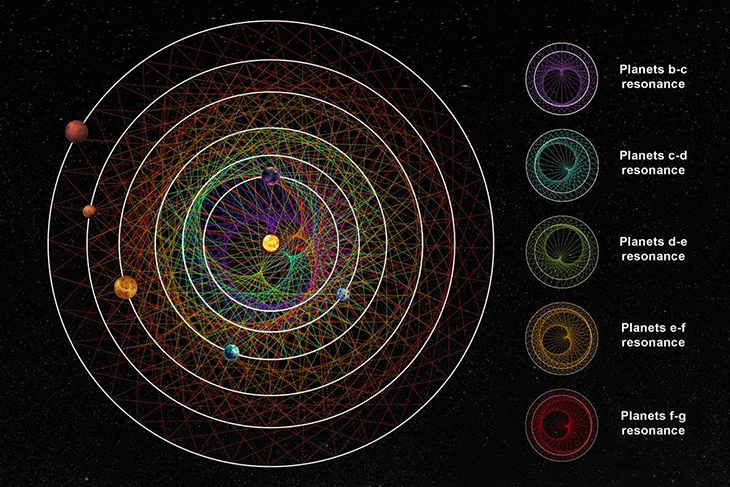
Due to the intricate and fragile nature of resonance configurations, numerous multi-planet systems identified by astronomers exhibit a lack of resonance, although their proximity suggests that they may have been in resonance at some point. However, instances of multi-planet systems maintaining their resonance are infrequent. According to senior author Raphael Luque, the preservation of resonance occurs in approximately 1% of multi-planet systems.
Worth So Much More
The planets in question are relatively ordinary, classified as “sub-Neptunes.” These are non-rocky celestial bodies with masses ranging from 1 to 2 times that of Earth. Although the research team has pinpointed six such planets, they acknowledge the possibility of discovering even more.
Dr. Hugh Osborn, a co-author of the paper, drew attention to the uniqueness of their orbital dance. In addition to his written contribution, he created a video that correlates the celestial ballet with musical chimes, providing a visual aid for a clearer understanding of the phenomenon.
“These transiting systems are worth their weight in gold because these are the systems where because they pass in front of their star you get all this information,” he told the press in a video conference. “You get a very precise radius, you get the starlight filtering through the atmosphere which enables you to measure the atmospheric constituents, so that’s why this is such an important system.”
A captivating and pressing inquiry emerged: What insights can science extract from the HD 110067 system to unravel the mysteries surrounding the resonance in our own solar system, assuming such a configuration existed? Studies indicate that our early solar system harbored a multitude of planetary bodies, far exceeding the current count. Collisions and the gravitational influence of Jupiter played pivotal roles in diminishing their numbers significantly.
The inclination among each planet in the orbital plane remains remarkably stable, fluctuating by less than 1 degree. This consistent pattern strongly implies that the system has experienced a serene and undisturbed existence throughout its 4.3-billion-year history.
“Even in our solar system, those resonances appear to have not survived, so having a system in which they have for billions of years—it’s going to tell us what are the requirements that at least for a star, that forms with its planets, must have in order to preserve these conditions,” said Dr. Luque at the University of Chicago.
“Maybe learning about this one will tell us about why our solar system doesn’t have one; is it because of Jupiter and Saturn, because they took all of the material available and didn’t let the smaller planets to form? So all these questions we aim to answer by studying this system in detail.”
What are your thoughts? Please comment below and share this news!
True Activist / Report a typo
